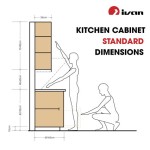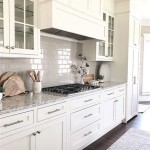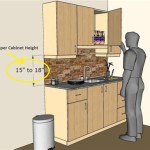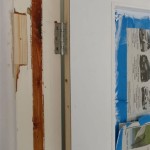Essential Aspects of How to Cut Kitchen Kickboards
Kitchen kickboards not only serve an aesthetic purpose but also conceal the gap between your kitchen cabinets and the floor, protecting it from water damage and dirt. Precisely cutting and fitting kickboards are crucial to ensure a professional-looking finish and prevent any water seepage that could lead to damage or unsightly mold growth.
Step 1: Determine the Length of the Kickboard
Measure the length of the area where the kickboard will be installed using a measuring tape. Measure from the end of the cabinet to the wall or obstruction. Deduct 2-3mm from the measurement to allow for expansion and contraction due to temperature changes.
Step 2: Mark the Cut Line
Mark the desired cut line on the kickboard using a pencil or scribe. If the kickboard is longer than your measuring tape, place a scrap piece of timber at the end of the tape and align it with the mark on the kickboard to continue the measurement and mark the cut line.
Step 3: Secure the Kickboard
Secure the kickboard firmly onto a stable and flat surface, such as a workbench or sawhorse. Use clamps or a vise to hold the kickboard in place, ensuring that it will not move while being cut.
Step 4: Choose the Right Saw
Select an appropriate saw for cutting the kickboard. A fine-toothed hand saw or a portable circular saw can be used. If using a circular saw, adjust the blade depth to just exceed the thickness of the kickboard.
Step 5: Cut the Kickboard
Slowly and carefully cut along the marked cut line. Hold the saw firmly and guide it with a steady hand. If using a circular saw, guide the saw along a straight edge or guide rail to ensure a straight cut.
Step 6: Sand and Prepare the Cut Edge
Once the kickboard is cut, sand the cut edge lightly to remove any splinters or rough edges. Use fine-grit sandpaper and sand in the direction of the grain. This will help ensure a smooth finish.
Step 7: Fit and Secure the Kickboard
Position the cut kickboard into place and check the fit. Adjust as necessary to ensure it fits snugly against the cabinet and the floor. Use screws or nails to secure the kickboard to the cabinet and the floor. Countersink the screws slightly below the surface to provide a flush finish.
Tips for Cutting Kitchen Kickboards
- Use a sharp saw blade to ensure a clean cut.
- Measure and mark carefully to avoid mistakes.
- Wear eye protection and appropriate safety gear.
- Cut in a well-ventilated area or outdoors.
- If possible, use a miter saw for perfect 45-degree cuts at corners.
- Caulk the joints between the kickboard and the cabinet and floor to prevent moisture penetration.
By following these essential steps and incorporating the additional tips, you can cut and fit kitchen kickboards precisely and professionally, enhancing the aesthetic appeal and functionality of your kitchen.

How To Cut Kitchen Kickboard Diy At Bunnings

Kitchen Kickboards Taken Fron The Renovation Series

How To Install Kickboard Diy At Bunnings

How To Diy Your New Kitchen Kickboards The Door Company

How To Fit Kitchen Plinths Pelmets Cornices

Fitting A Kitchen Plinth The Carpenter S Daughter

Kitchen Fitting Plinths

How To Fit Kitchen Plinths Halman Thompson

How To Fit Plinth Or Kickboards Kitchen Cabinets

How To Install Kickboard Diy At Bunnings
Related Posts








